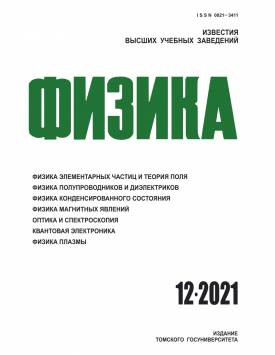Hamiltonian formalism for the collective fermionic waves in a quark-gluon plasma
A Hamiltonian theory for the collective quark-antiquark excitations with abnormal relation between chirality and helicity in a high-temperature quark-gluon plasma (QGP) is developed. For this purpose, Zakharov’s formalism for constructing the wave theory in nonlinear media with dispersion is used. On the basis of this approach special canonical transformations including simultaneously both bosonic and fermionic degrees of freedom of the collective excitations in QGP are derived. The explicit form of the effective fourth-order Hamiltonian in powers of creation and annigilation operators of plasmons and plasminos describing the elastic scattering processes of plasminos off plasminos and plasminos off plasmons is found. The developed approach is used further in constructing the Boltzmann type kinetic equation describing the process of elastic scattering of plasminos off plasminos in quark-gluon plasma and the effect of so-called nonlinear Landau damping for soft Fermi-excitations. A comparison of the effective amplitude of plasmino-plasmino interaction defined within the classical Hamiltonian theory, with the corresponding matrix element obtained early in the framework of high-temperature quantum chromodynamics in the so-called hard thermal loop approximation is performed. This enabled one to obtain an explicit form of the vertex and coefficient functions in the effective amplitudes and in the canonical transformations.
Keywords
quark-gluon plasma, hard thermal loop approximation, Hamiltonian formalism, plasmino, kinetic wave equationAuthors
| Name | Organization | |
| Markov Yu.A. | Matrosov Institute for System Dynamics and Control Theory SB RAS | markov@icc.ru |
| Markova M.A. | Matrosov Institute for System Dynamics and Control Theory SB RAS; Irkutsk State University | markova@icc.ru |
| Markov N.Yu. | Matrosov Institute for System Dynamics and Control Theory SB RAS; Irkutsk State University | markov@icc.ru |
References
